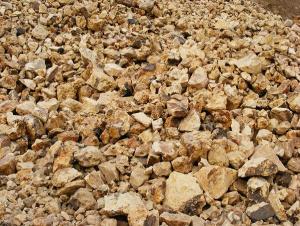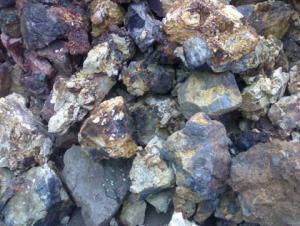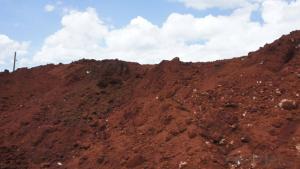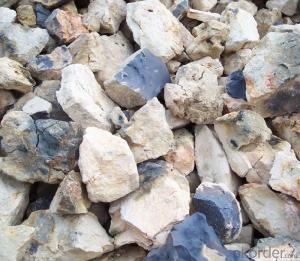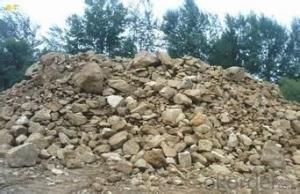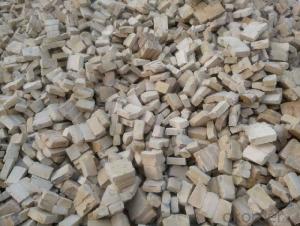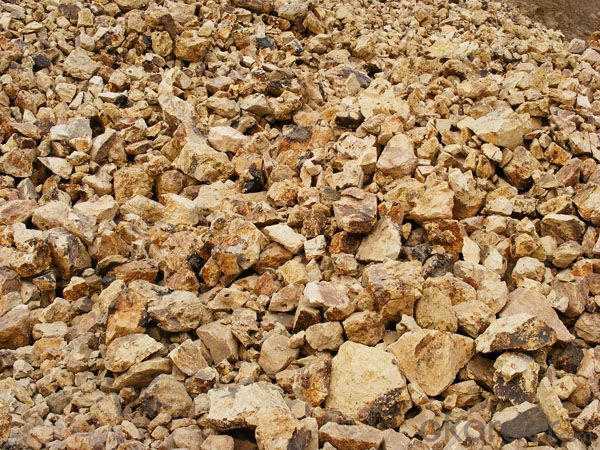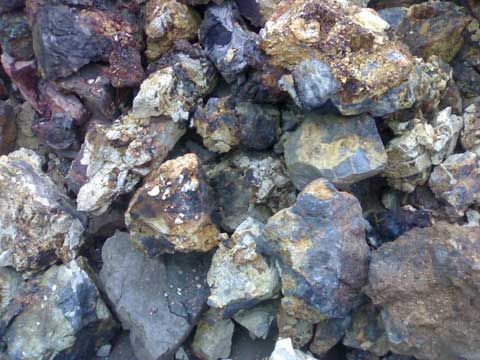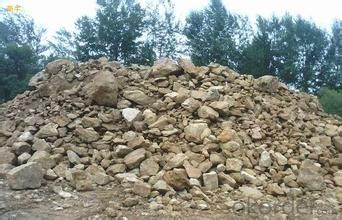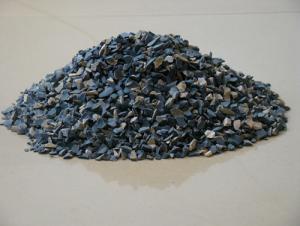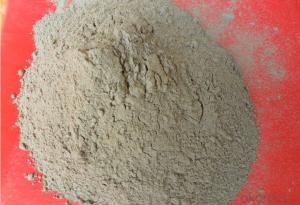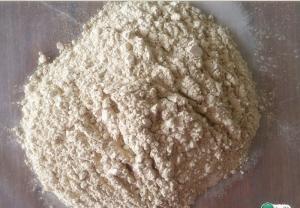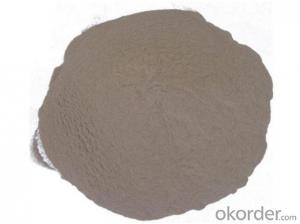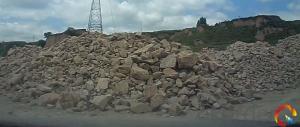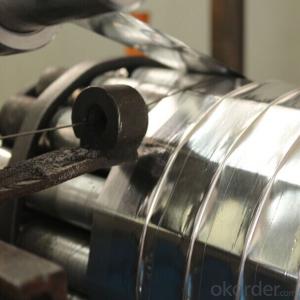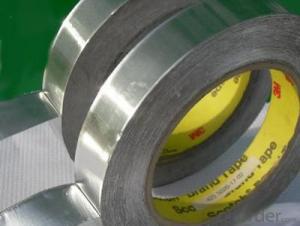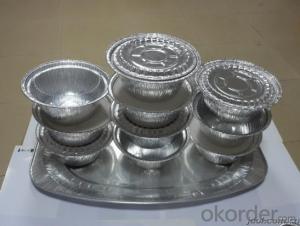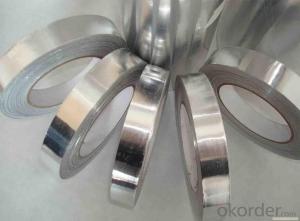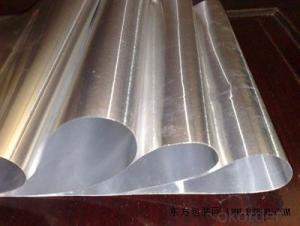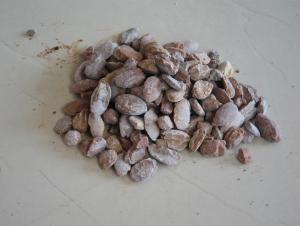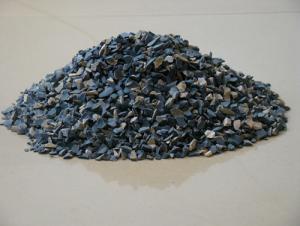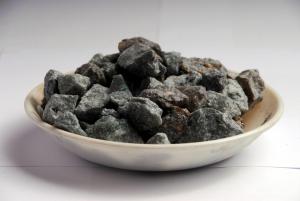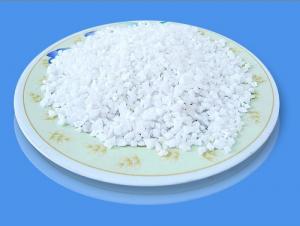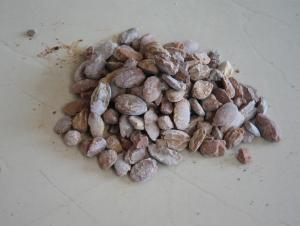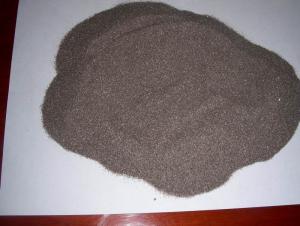Metallurgical Grade Bauxite/Aluminium Soil of CNBM in China
- Loading Port:
- Tianjin
- Payment Terms:
- TT OR LC
- Min Order Qty:
- 1 m.t.
- Supply Capability:
- 10000000 m.t./month
OKorder Service Pledge
OKorder Financial Service
You Might Also Like
1.Structure of Calcined Bauxite Description
Bauxite (aluminous soil; Bauxite) is also called the alumina or bauxite, main ingredients are alumina, hydrated alumina containing impurities, is an earthy mineral. White or gray, brown and yellow or light red by iron. From 4 to 3.9 g/cm3 density, hardness, 1 ~ 3 is not transparent, very brittle. Very difficult to melt. Insoluble in water, soluble in sulfuric acid, sodium hydroxide solution. Mainly used for aluminium, refractory material.
2.Main Features of the Calcined Bauxite
Calcined bauxite is one of the principal ore of aluminum. Calcined bauxite contains hydrous aluminum oxides and aluminum
hydroxides, formed through the laterization of aluminous rocks in tropical and subtropical areas .Calcined bauxite is obtained by calcining (heating)superior grade bauxite at high temperature (from 85OC to 1600C) .This removes moisture there. By increasing the alumina content,compared to an alumina content of about 57%to 58% in raw bauxite, calcined bauxite has an alumina content of 84%to88%.The heating is carried out in rotary kilns.
3. Calcined Bauxite Images
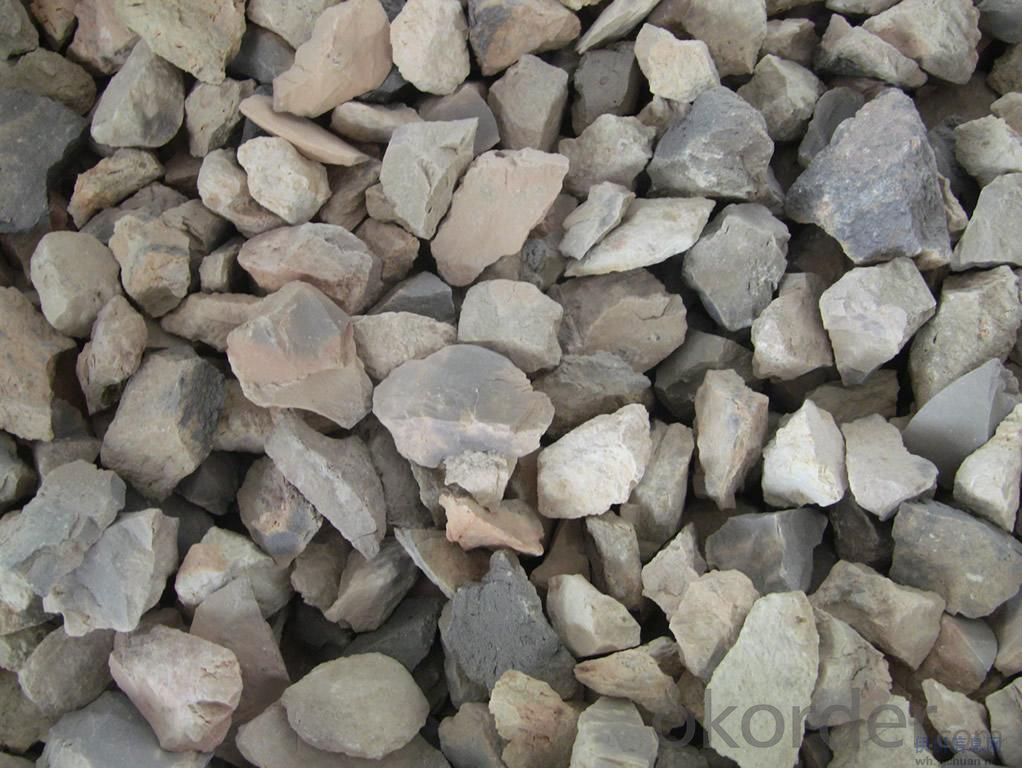
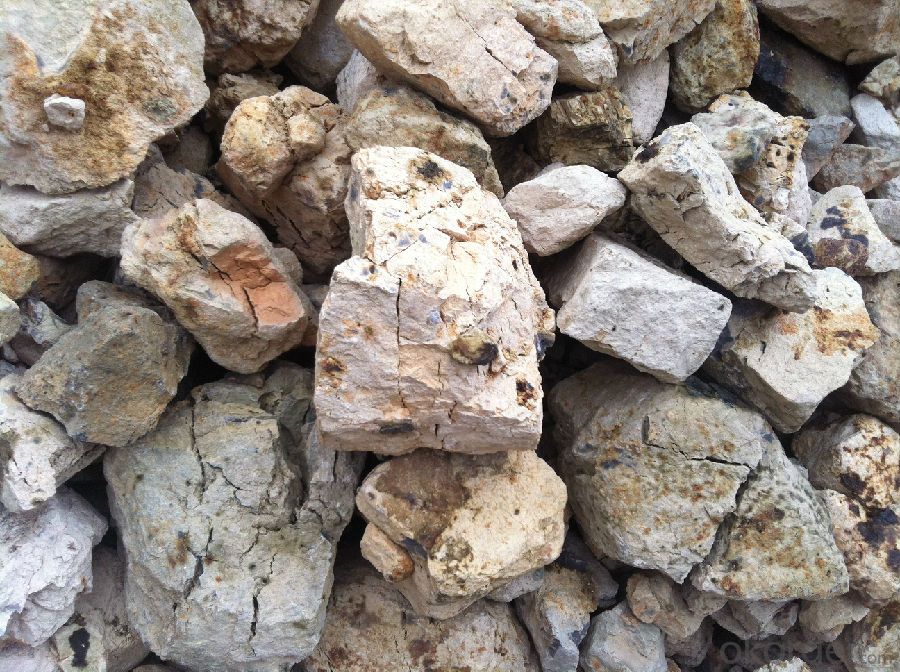
4. Calcined Bauxite Specification
Item | Al2O3 | Fe2O3 | TiO2 | K2O+Na2O | CaO+MgO | Bulk density |
LIFENG65 | ≥65 | ≤2.5 | ≤4.0 | ≤0.3 | ≤0.5 | ≥2.6 |
LIFENG75 | ≥75 | ≤2.5 | ≤4.0 | ≤0.3 | ≤0.5 | ≥2.7 |
LIFENG80 | ≥80 | ≤2.5 | ≤4.0 | ≤0.3 | ≤0.5 | ≥2.8 |
LIFENG85 | ≥85 | ≤2 | ≤4.0 | ≤0.3 | ≤0.5 | ≥3.0 |
LIFENG86 | ≥86 | ≤2 | ≤4.0 | ≤0.3 | ≤0.5 | ≥3.1 |
LIFENG87 | ≥87 | ≤2 | ≤4.0 | ≤0.3 | ≤0.5 | ≥3.2 |
LIFENG88 | ≥88 | ≤1.8 | ≤4.0 | ≤0.25 | ≤0.5 | ≥3.25 |
LIFENG90 | ≥90 | ≤1.8 | ≤4.0 | ≤0.25 | ≤0.5 | ≥3.25 |
5.FAQ of Calcined Bauxite
1). Q: Are you a factory or trading company?
A: We are a factory.
2). Q: Where is your factory located? How can I visit there?
A: Our factory is located in ShanXi, HeNan, China. You are warmly welcomed to visit us!
3). Q: How can I get some samples?
A: Please connect me for samples
4). Q: Can the price be cheaper?
A: Of course, you will be offered a good discount for big amount.
- Q: Who knows about the fire endurance of A grade fireproofing glass doors?
- Fire doors and windows are divided into grade A, B and C according to the real national situation, also the minimum fire endurance has been stipulated, namely, the minimum fire endurance of grade A is 1.50 h, that of grade B and C are 1.00 h and 0.50 h respectively. There are wooden fire doors and steel fire doors. The main purpose of it is to reach the time that fire resistance should last. But door?closers are required to install. The fire endurance of A grade wooden fire doors should be no less than 90 min, and that of B grade fire doors should be no less than 60 min, that of C grade fire doors should be no less than 30 min! ! !
- Q: Does the external wall thermal insulation materials level b1 need the fire barrier zone?
- First, the cotton fire barrier zone "rock wool board" mainly uses water-repelling rock wool board produced by pendulum method as thermal insulation layer materia, and connecting and fixing base wall by binding and nail bonding, it is composed level A non-combustible building energy efficiency thermal insulation system by plastering layer composed by plastering mortar and glass?fiber mesh and decorative mortar finishing layer or coating. Rock wool board exterior insulation system, low thermal conductivity, good ventilation, combustion performance advantages of higher levels can be used in new construction, expansion, renovation of residential buildings and public buildings energy-saving exterior wall insulation works, including exterior insulation, fire Barrier non-transparent wall insulation and EPS external thermal insulation system. The introduction of main level A fireproofing EIFS on the present market (The following text is selected from China Building Standard Design and Research Institute " external wall thermal insulation building construction" Standard No. 10J121) Second, the foam concrete fire barrier zone 1. It is very green without the release of irritant and harmful gases; no mineral cotton floats do harm to human skin and the respiratory tract; production of?toxic?gases is security level (AQ1), there is no harmful gas and waste emissions and less carbon emissions; it exist not duplicate insulation demolition waste to pollute the environment.
- Q: Can anyone tell me the requirements of the refractory masonry??
- Refractory materials actually have two functions. The first one is to improve the refractoriness and the second one is to improve the body plasticity of refractory materials.The higher the aluminum content is, the better refractory it will be. Of course, the content of aluminum in refractory materials can not be impoved only by using kaolin. Such raw materials that contain more aluminum as bauxite chamotte should be used as framework.So the content of aluminum in kaolin does not need to be too high and more than 38% of aluminum is enough. However, the viscosity should be taken into account. It will be better if the viscosity is better as the extra bentonite do not need to be added.The refractoriness that is is above 1400 degree is enough.
- Q: How long is the fire endurance of Grade A fire resisting shutter
- Fire door can be divided into Grade A, Grade B and Grade C fire door according to its fire endurance. Their fire endurance is not less than 1.20h, 0.90h and 0.60h respectively. Use fire resisting shutter as fire?compartment separation in places where it is difficult to set firewall. When fire resisting shutter whose unexposed surface temperature rise is used as judging condition of fire endurance is used, its fire endurance should not be lower than 3h. When fire resisting shutter whose unexposed surface temperature rise is used as judging condition of fire endurance is not used, individual protection of ?closed automatic water spray system shoule be set at two sides of the shutters and duration of water spray system should not be less than 3.0h. When the fire resisting shutter is used for fire?compartment, fire endurance is 3h. When the fire resisting shutter is set at the opening part of firewall, fire endurance is 1.2h.
- Q: Where is the sizing nozzle for refractories? Just enter the line, master into!
- This is the use of steel tapping water procedures inside!!
- Q: What is the acceptance standard of refractory?
- It depends on the variety of materials. In general the main test items include chemical composition, refractoriness, refractoriness under load, creep, volume density, linear change, strength, slag resistance, thermal conductivity and thermal expansion. If it is shaped products, it is required to inspect the size deviation and whether it has edge. Detection method accords with the relevant national standards and there are lots of them. You can refer to the standard compilation.
- Q: Detailed description of magnesia dolomite refractory material?
- The use of low chromium or chrome free refractories is more and more widely used, developed countries in the development of chrome free refractories to replace the chromium containing material, through research and production practice show that dolomite refractories is the refining of AOD furnace, large cement kiln ideal material.
- Q: Which are roofing fireproofing material?
- (1) Foamed concrete is a kind of fire-proof thermal inuslation matertial featured by good fire resistance and thermal insulation. Besides, it is also characterized by excellent sound proofing, penetration resistance, easy construction, safety and environmental protection without toxin and pollution. (2) Foam glass is featured by light weight, small heat conductivity coefficient and water absorbption, non-inflammability, fire resistance, high strength, no moulding, corrosion resistance, non-toxin and stable physical and chemical properties and thus widely used petroleum, chemical engineering and underground construction. It is also featured by thermal insualtion, heat/cold preservation and sound absorbption and thus can be used for thermal insulation of external wall and roof of civil builduing. Foam glass is featured by stable chemical property, easy to be processed and not easy to deforme, and durable. (3) With slag, basalt and other natural ore as the main raw material, rock wool, mineral wool and its products are made by high temperature melting into fiber, and then processing with binder. It has low thermal conductivity, fire resistance, easy construction and good effects of energy saving and thus is highly cost-effective. (4) With phenolic foam material as main material, phenolic resin plate is made by foaming thermoset phenolic resin. It is featured by light weight, fire resistance, no burning in the air, no smoking, non-toxin, no dropping and non-embrittlement and thus is an ideal thermal insulation material used in HAVC projects. Due to its high obturator formamen rate, low heat conductivity coefficient, good thermal insulation, water resistance and water vapor permeability, phenolic foam is an ideal thermal insulation material.
- Q: What are the types of advanced refractory?
- Hello there: Divided into two categories of general and special refractories ordinary refractories by chemical properties into acidic, neutral and alkaline. Special refractory composition is divided by high temperature oxide, refractory compounds and high-temperature composite materials Furthermore, according to refractoriness can be divided into ordinary refractory products (1580 ~ 1770 ℃), advanced refractory products (1770 ~ 2000 ℃) and grade refractory products (2000 ℃ above). the article can be divided into blocks (standard bricks, shaped bricks, etc. ), special shape (crucible, sagger, pipe, etc.), fibrous (aluminosilicate, zirconia and boron carbide quality, etc.) and a random shape (refractory clay, pouring materials and ramming mixes, etc.) according to the sintering process it can be divided into sintered products, cast products, melt blown products.
- Q: What are the differences between first-level fire-resistant materials and second-level fire-resistant materials?
- The combustion performance of materials could be divided into: A( noninflammability), B1(flame retardancy), B2(flammability), B3(inflammability). Building materials are divided into four ranks according to these properties. 1. In accordance with Code for Design of Building Fire Protection(GBJ16-1987)(revised edition in 2001), fire hazards in producing and storage can be divided into five types. In Fire Prevention Code of Petrol Chemical Enterprise Design(GB50160--1992)(revised edition in 1999), classification of fire hazards is also achieved according to the hazards of materials that have been using, producing and storing. Measures in prevention of fire explosion could be taken from the perspectives of fire separation, fire resistance level of structures, allowable floors, safe evacuation, and fire extinguishing facilities based on different levels of fire hazards. 2. Four fire resistance rating of buildings are listed in the book Code for Design of Building Fire Protection. And specific stipulations are made to the fire resistance of main elements of buildings, such as bearing walls, beams,pillars, and floors. When designing a building, if permitted, refractory materials of high-rank should be adopted in those buildings which have high potential fire hazard and a lot of combustible material and valuable equipment. While making sure fire resistance rating, the duration of fire resistance of each elements should meet its requirements.
Send your message to us
Metallurgical Grade Bauxite/Aluminium Soil of CNBM in China
- Loading Port:
- Tianjin
- Payment Terms:
- TT OR LC
- Min Order Qty:
- 1 m.t.
- Supply Capability:
- 10000000 m.t./month
OKorder Service Pledge
OKorder Financial Service
Similar products
Hot products
Hot Searches
Related keywords
